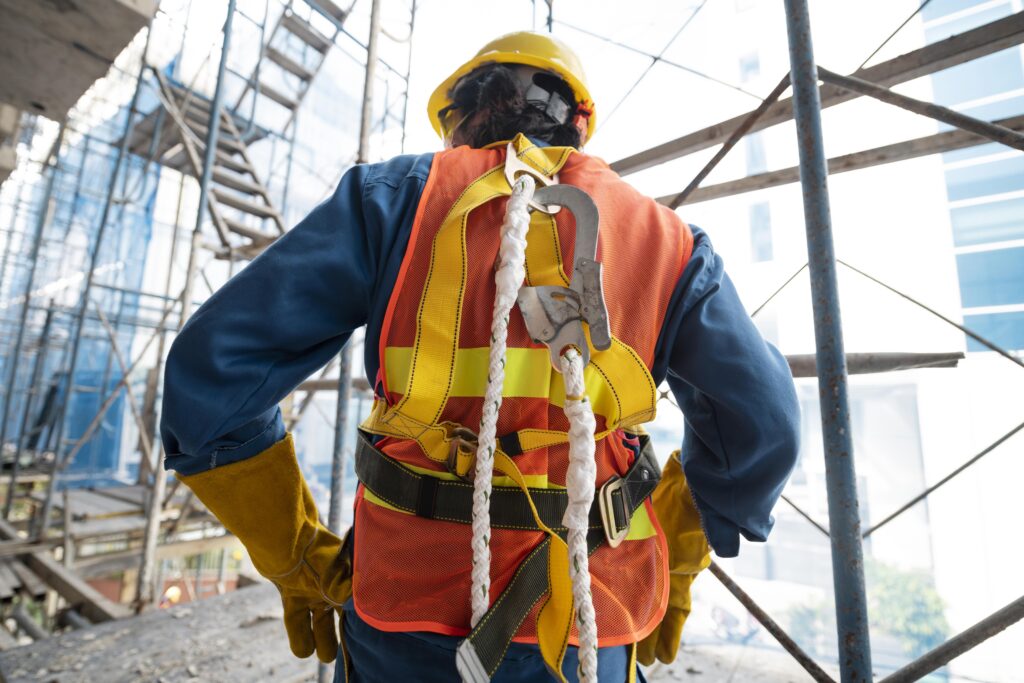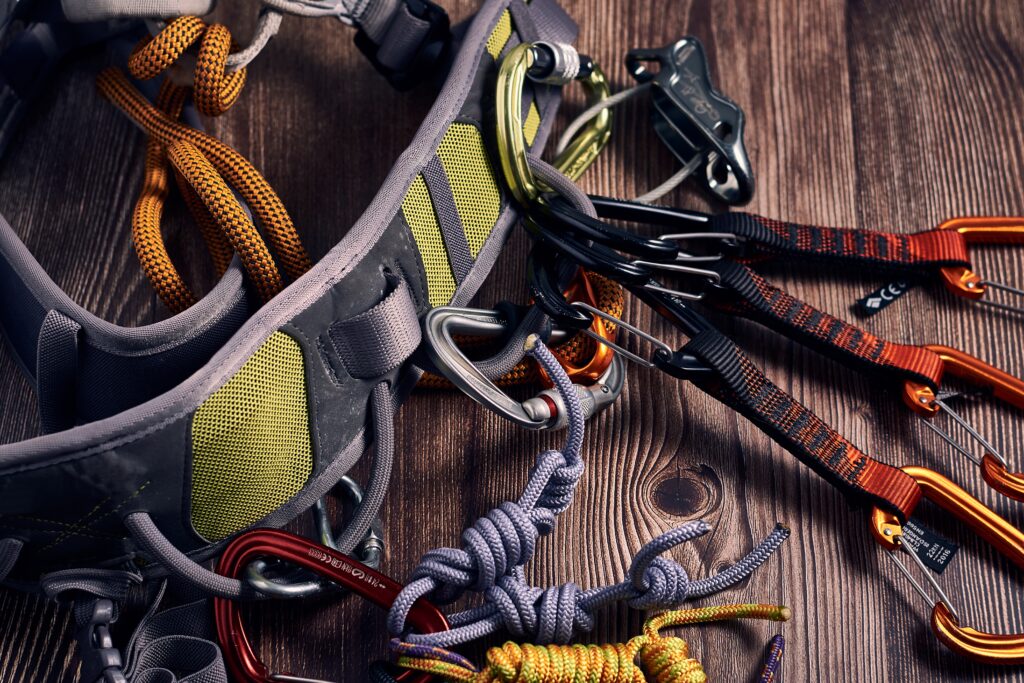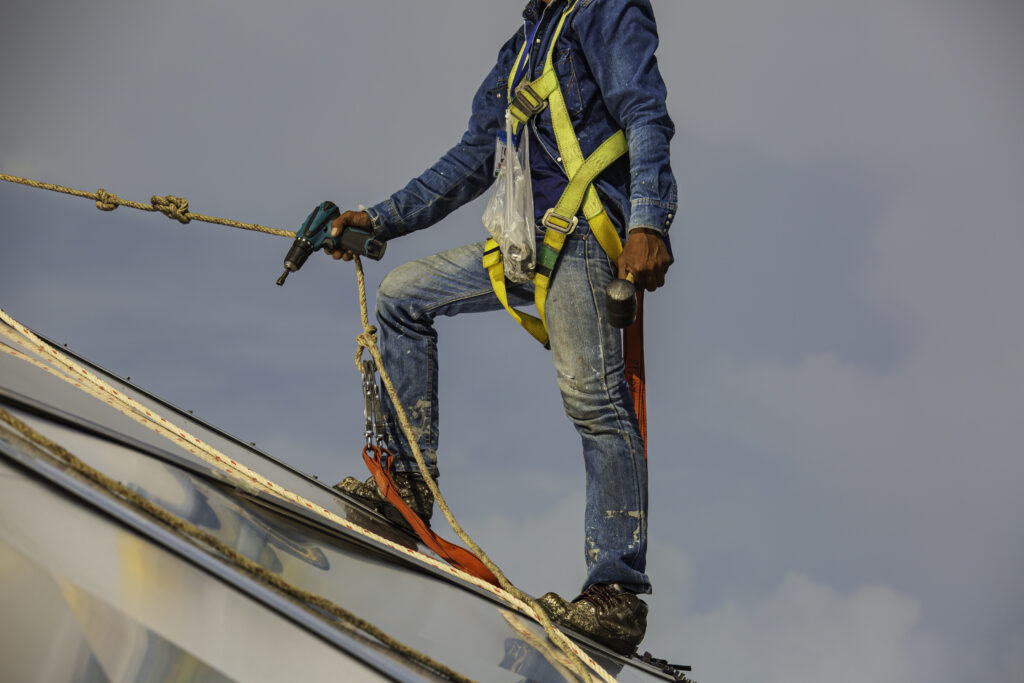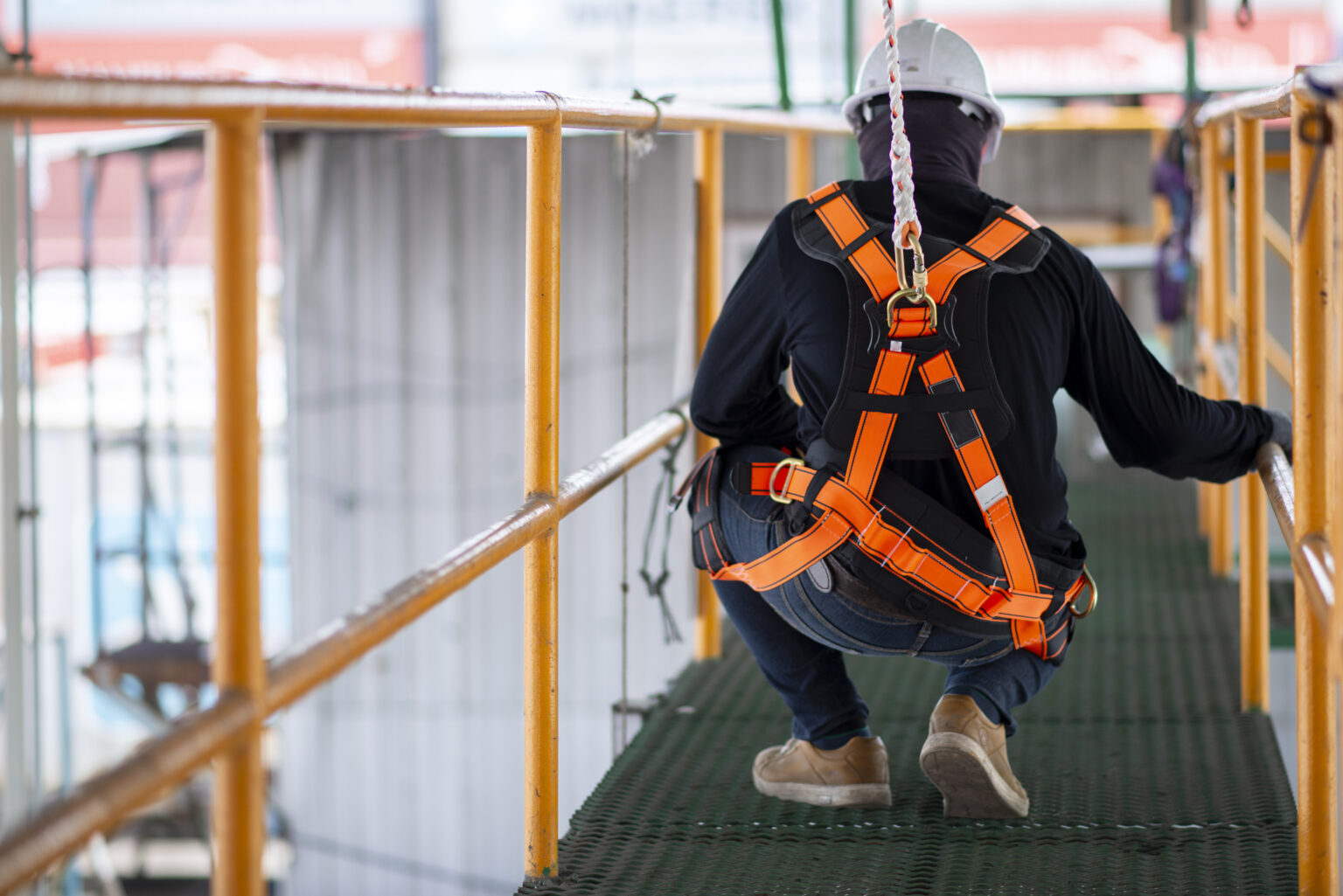Roof work can be a dangerous endeavour as falls from heights can lead to severe injuries and in some cases even death.
According to a recent report from HSE (Health and Safety Executive), a total of 135 individuals lost their lives due to workplace accidents between the years 2022 and 2023, with 30% of these accidents being attributed to falls from height.
After all, picture a construction worker repairing a damaged section of a roof. Without a safety harness, a simple misstep or loss of balance could result in a devastating fall.
In this type of situation, wearing a properly fitted and durable roof safety harness can prevent serious injuries and save lives.
In this article, we will discuss the different features of an ideal safety harness, the different types available of harnesses on the market, factors to consider before making a purchase, safety standards and certifications, and tips for proper maintenance and care.
- Key Features of a Good Roof Safety Harness
- Types of Roof Safety Harnesses
- Safety Standards and Certifications for Roof Safety Harnesses
- How To Maintain Your Safety Harness
- Your Frequentely Asked Questions

Key Features of a Good Roof Safety Harness
Safety harnesses are designed to keep the user secure and anchored to a stable structure while working at height, providing a lifeline that prevents falls and allows for a controlled descent in case of an emergency.
On top of that, in a situation where a worker needs to evacuate the roof quickly, these harnesses provide a lifeline that allows for a safe and controlled descent. This feature is a must in industries such as construction and maintenance, where workers often find themselves working at considerable heights.
Here is a list of all main features you should consider when choosing the best safety harnesses for your workers:
- Durability: Look for a roof safety harness made from high-quality materials that can withstand the rigors of regular use and exposure to the elements. A durable harness will remain reliable and effective even in challenging work environments. Of course, always refer to the manufacturer’s guidelines for maintenance and inspection intervals to ensure the harness maintains its integrity and safety features over time.
- Comfort and Fit: The best safety harnesses are adjustable to fit different body sizes and provide a comfortable fit for extended periods of wear. Comfort is important to ensure that workers can focus on their tasks without discomfort or distraction.
- Weight Capacity: Always make sure that the your harness of choice is rated not only to support the weight of the user but also any additional equipment they may be carrying.
- Ease of Use and Adjustability: Look for harnesses that are easy to put on and take off, with user-friendly adjustment mechanisms for a secure fit. A harness that is simple to use and adjust saves valuable time so that workers can quickly and efficiently prepare for their tasks.
As a last note, remember that safety should never be compromised, so always invest in high-quality harnesses and follow proper safety protocols to ensure a secure and accident-free working environment.

Types of Roof Safety Harnesses
There are three main types of roof safety harnesses available on the market, each designed for specific applications.
- Full-Body Harnesses: Full-body harnesses are the most commonly used type of safety harness for roof work. They are designed to distribute the force of a fall across the wearer’s entire body, and typically have multiple attachment points for connecting to anchor points and are adjustable to fit different body sizes. One of the key advantages of full-body harnesses is their versatility. They can be used in a wide range of roof work scenarios, from simple repairs to more complex installations.
- Chest Harnesses: Chest harnesses are typically used when working in confined spaces when a full-body harness may restrict movement, or as part of a rescue system where fall hazards are not present. It’s important to note that these harnesses should not be used alone for fall protection due to their limited support and safety features.
- Suspension Belts: When it comes to suspended access work, such as window cleaning or façade maintenance, suspension belts are the go-to safety harnesses. These specialized harnesses are designed to support the user in a suspended position and allow for safe and controlled movement while working at height. What sets suspension belts apart is their additional padding and ergonomic features. These enhancements provide enhanced comfort during long periods of suspended work, reducing fatigue and increasing productivity.
As a last note, remember to always refer to the manufacturer’s guidelines and consult with safety professionals for specific recommendations based on your unique needs and work environment.

Safety Standards and Certifications for Roof Safety Harnesses
To guarantee the highest level of safety for your workers, always purchase safety harnesses that are certified with the following safety standards.
EN 361: This standard details the design criteria, performance requirements, and testing methods that a full-body harness must meet to be deemed safe for use. For workers on roofs, this standard guarantees that their harness will provide comprehensive protection by distributing the fall forces across the body, thereby reducing the risk of injury during a fall. It also covers aspects like material durability, secure fastening systems, and the ability to adjust to fit the wearer correctly, guaranteeing the harness performs effectively in a fall arrest scenario.
EN 358: This standard pertains to work positioning and restraint systems, which are essential for tasks that require workers to be positioned at height but prevent them from reaching a point where a fall could occur. It sets out the specifications for belts and lanyards that are used to maintain a worker in a stable position, allowing them to work hands-free with reduced risk of falling. This is particularly relevant for roof workers who need to maintain a safe position near the edge of a roof or when working on sloped surfaces. EN 358 guarantees that these systems provide the necessary support and restraint without compromising the worker’s safety or mobility.
EN 363: This standard encompasses the comprehensive safety requirements for fall arrest systems, including harnesses, lanyards, energy absorbers, and anchorages. The EN 363 standard is a must for roofing operations as it ensures that every component of a fall arrest system works cohesively to provide maximum protection against falls. It covers the selection, use, and maintenance of these systems, guaranteeing they are effective in arresting falls while minimizing the impact forces on the body. For roofers, this means the assurance that their entire fall protection setup, from the harness to the anchorage point, has been rigorously tested and proven to work under real-world conditions.

How To Maintain Your Safety Harness
Simply owning a safety harness is not enough. Your workers should learn to take proper care of their harnesses to make sure they remain effective for a long time.
Here are some important maintenance and care tips on how to maintain a safety harness:
Regular Inspection of a Safety Harness: Before each use, your workers should take a few minutes to carefully examine the straps, buckles, and attachment points for any signs of wear or damage. Instruct them to look for frayed edges, loose stitching, or any other visible signs of deterioration. If they notice any such issues, it is imperative to replace the damaged or worn components immediately. In addition to visual inspections, it is also recommended to perform a functional test of the safety harnesses. This involves simulating a fall to test whether the harness properly activates and arrests the fall. While this may seem unnecessary, it is an important step in guaranteeing the reliability of the safety harness.
Cleaning a Safety Harness: After each use, your workers should always clean their safety harnesses to remove any dirt, debris, or contaminants that may have accumulated. Make sure they follow the manufacturer’s instructions for cleaning, as different harnesses may require specific cleaning methods. In general, mild soap and water might be sufficient for most harnesses, but avoid using harsh chemicals or solvents that can degrade the integrity of the materials. When cleaning their safety harnesses, your workers should pay special attention to the areas where the straps and buckles meet. These areas are prone to dirt buildup and may require extra scrubbing to remove stubborn grime. The harnesses must be rinsed thoroughly and air-dried before they are stored.
Storing a Safety Harness: Proper storage is another important aspect of maintaining a safety harness. All harnesses should be stored in a clean and dry environment, away from direct sunlight or extreme temperatures. Exposure to sunlight and extreme heat or cold can weaken the materials and compromise the harness’s integrity.
Your FAQ
- How do I choose the right size? As a rule of thumb, measure your chest, waist, and thighs, then compare these measurements with the manufacturer’s sizing chart. A properly fitting harness should allow for full range of motion without pinching or loose straps.
- Can I use a chest harness without a full-body harness? Chest harnesses are generally not recommended as standalone fall protection devices. They’re designed to be used in conjunction with full-body harnesses for added security during specific activities.
- How often should I inspect my safety harness? Inspect your harness before each use for wear, damage, and functionality. Additionally, perform a detailed inspection by a competent person at least annually or more frequently based on manufacturer recommendations and usage intensity.
- Are there any specific cleaning agents I should avoid when cleaning my safety harness? Avoid harsh chemicals, bleach, or abrasive cleaners that can degrade the harness materials. Use mild soap and water, and follow the manufacturer’s cleaning instructions to ensure the longevity and reliability of your harness.

Conclusion
Roof work can be hazardous, but with the right safety equipment, such as a properly fitted and reliable safety harness, you can minimize the risks and guarantee your workers’ safety while working at height.
Next, you can browse our full selection of safety harnesses selected from the most trusted manufacturers in Europe or get in touch with our experts for a consultation or a personal quote.

















